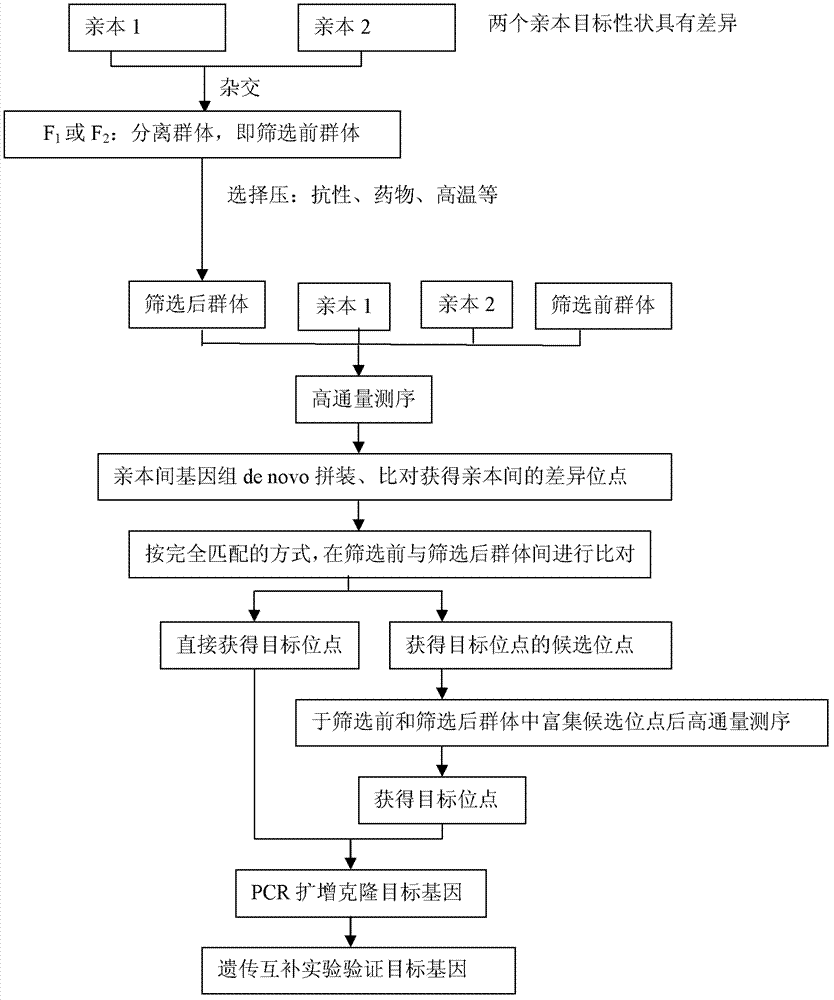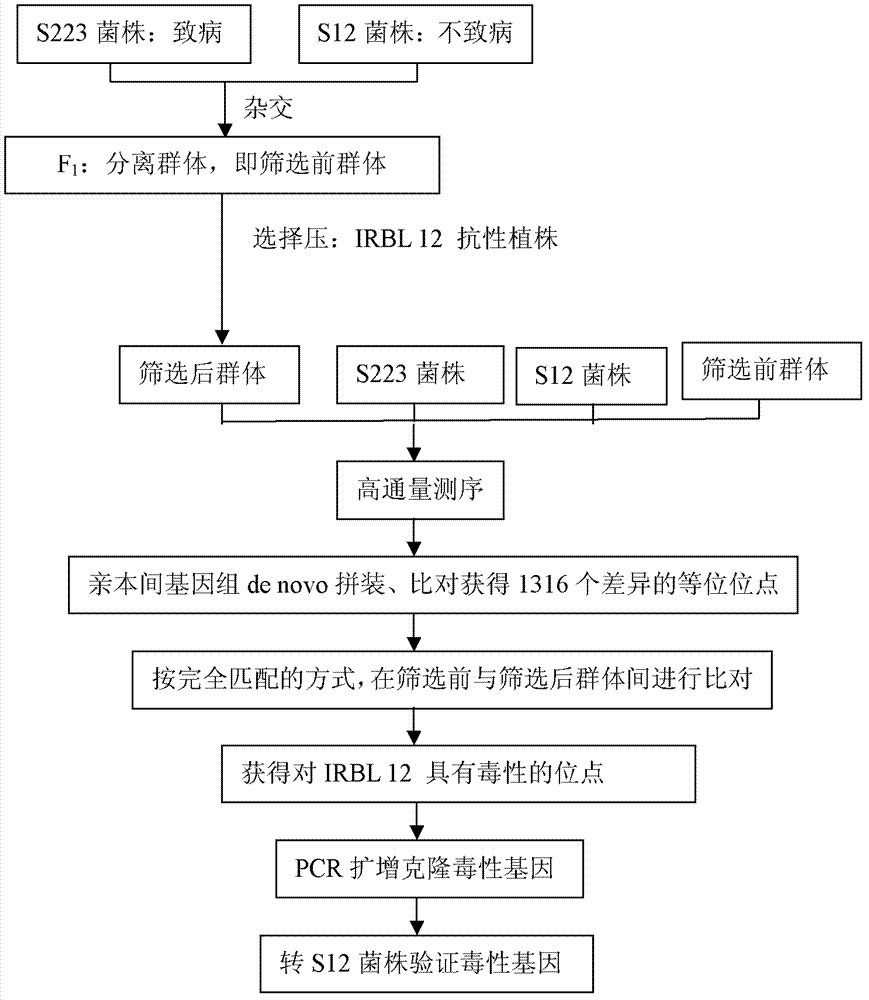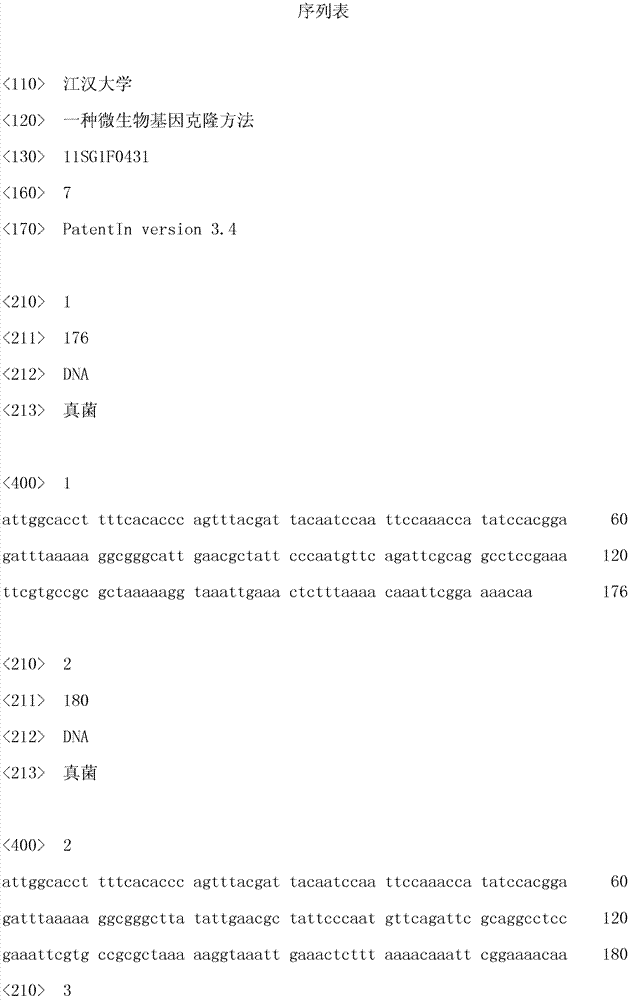Method for microbe gene clone
A cloning method and microbial technology, applied in the field of genetics, can solve the problems of complicated workload, low exchange rate, strong subjectivity, etc., and achieve the effects of reducing risks, clear results, and broadening the scope of cloning and utilization.
- Summary
- Abstract
- Description
- Claims
- Application Information
AI Technical Summary
Problems solved by technology
Method used
Image
Examples
Embodiment 1
[0024] A method for microbial gene cloning, comprising the following steps (see figure 1 ):
[0025] (1) Construction of segregation population: use parent 1 and parent 2 with differences in target traits (such as toxicity, drug resistance, temperature sensitivity, etc.) to cross. If the microorganism is haploid, then F 1 It is a segregation group, if it is diploid, then go to F 2 Generations become a segregating population, which is the pre-screening population.
[0026] (2) Automatic screening of isolated populations: according to the characteristics of the target traits, select the selection pressure for the target traits (such as resistant plants, drugs, high temperature, etc.), automatically screen the isolated populations, and obtain the screened populations;
[0027] (3) DNA extraction: extract the genomic DNA of 2 parents, 2 mixed populations before and after screening;
[0028] (4) Determination of the target site: According to the high-throughput sequencing proce...
Embodiment 2
[0031] A kind of rice blast avirulent gene cloning method (see figure 2 ):
[0032](1) Identification of virulent and avirulent rice blast races. The physiological races of rice blast were isolated and cultured from the diseased leaves of Lijiang Xintuan Heigu rice in Enshi, Hubei Province, and the rice material IRBL 12 was inoculated with these physiological races. It was found that after inoculation with race S223, the typical rice blast fusiform appeared Lesions, indicating that the S223 race is virulent to IRBL 12. After inoculation with S12, IRBL 12 had almost no lesions, indicating that the S12 race was not toxic to IRBL 12.
[0033] (2)F 1 Obtaining and culturing hybrid ascospores. The parent strains of Magnaporthe grisea S223 and S12 were cultured on oatmeal medium (30g of oatmeal, 10g of sucrose, 18g of agar, 1000ml of water) at 25°C until the mycelium met, and continued to cultivate at 20°C under light until the junction of the mycelium appeared Ascus shell bla...
PUM
 Login to View More
Login to View More Abstract
Description
Claims
Application Information
 Login to View More
Login to View More - R&D
- Intellectual Property
- Life Sciences
- Materials
- Tech Scout
- Unparalleled Data Quality
- Higher Quality Content
- 60% Fewer Hallucinations
Browse by: Latest US Patents, China's latest patents, Technical Efficacy Thesaurus, Application Domain, Technology Topic, Popular Technical Reports.
© 2025 PatSnap. All rights reserved.Legal|Privacy policy|Modern Slavery Act Transparency Statement|Sitemap|About US| Contact US: help@patsnap.com



